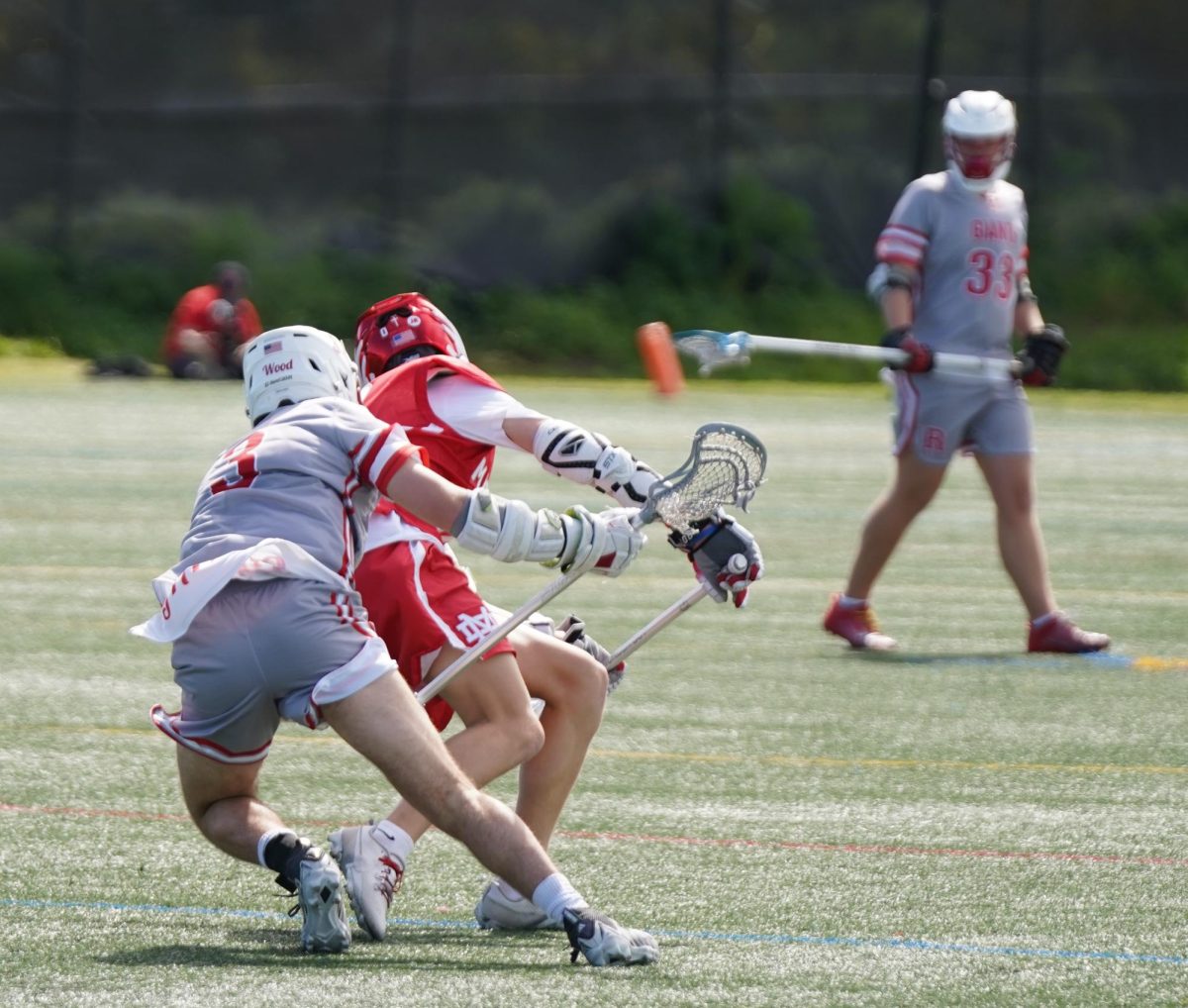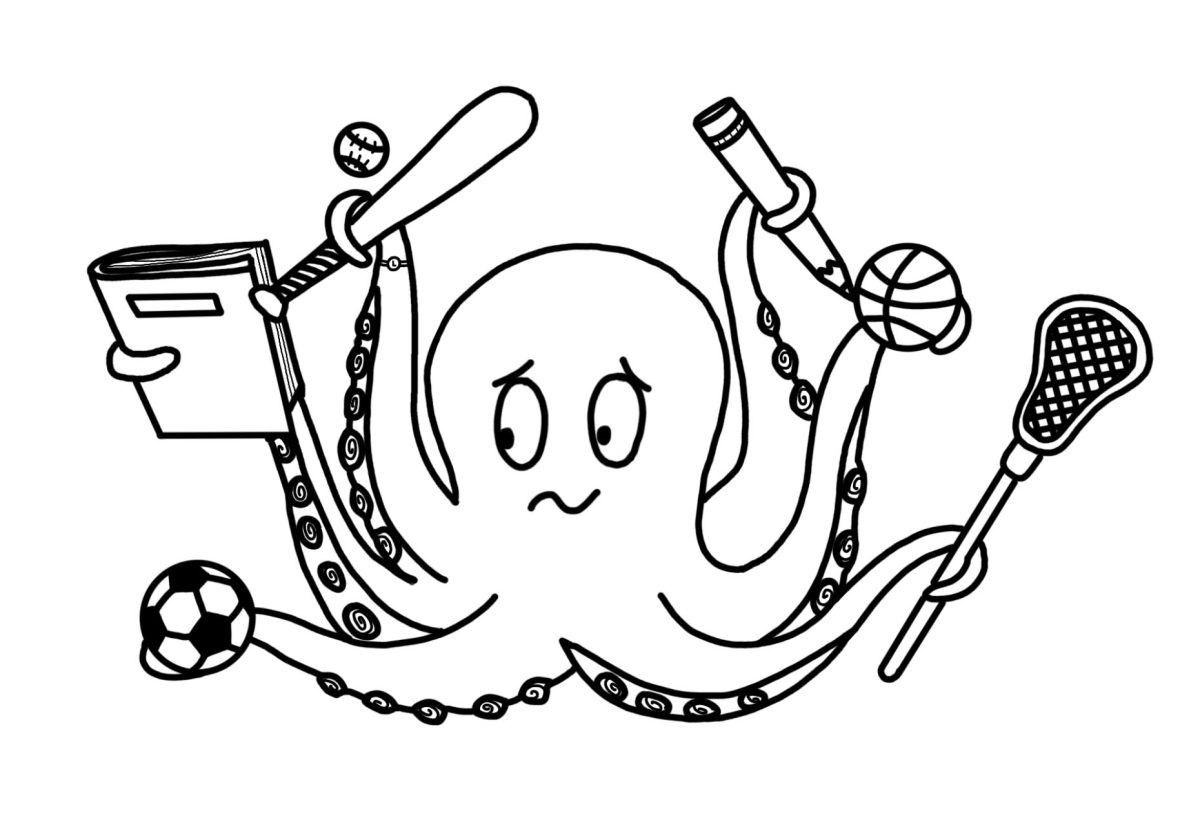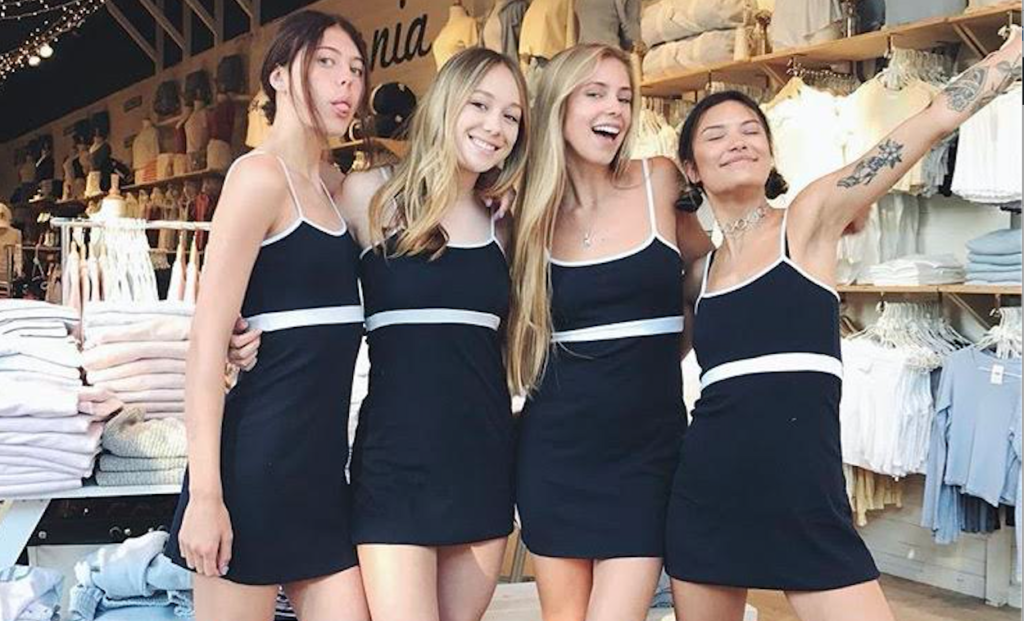With its revolutionary one-size business model, trendy clothing and a strong social media presence of more than 3.5 million followers on Instagram, clothing company Brandy Melville has become an attractive apparel option for many high school students in the Bay Area. After launching in the United States in 2009, owners Jesse Longo and Stephan Marsan have expanded to 36 stores overseas in addition to the 26 stand-alone stores in the U.S. In July 2013, the Brandy craze in Marin grew when the fourth Bay Area location opened in the Village at Corte Madera. After reports from students of the store’s unusual business and hiring practices, the Bark interviewed both current and former local employees to investigate what goes on behind the trendy storefront at Brandy Melville.
Many of the girls we interviewed said that Brandy Melville strives to hire girls that possess a certain aesthetic, which many call the “Brandy look”— tall, skinny and pretty.
The “@Brandymelvilleusa” Instagram page speaks for itself; the girls featured are overwhelmingly white and thin and have cascading, beachy hair. 
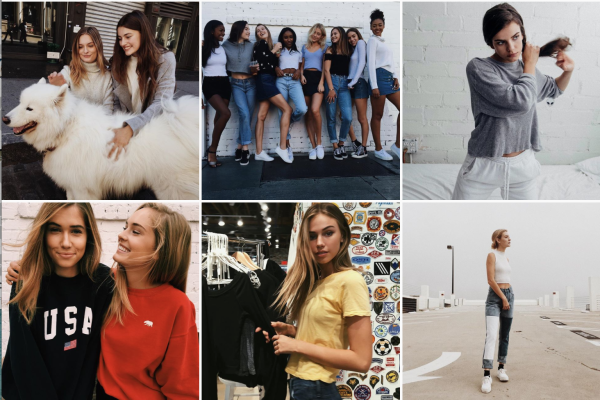
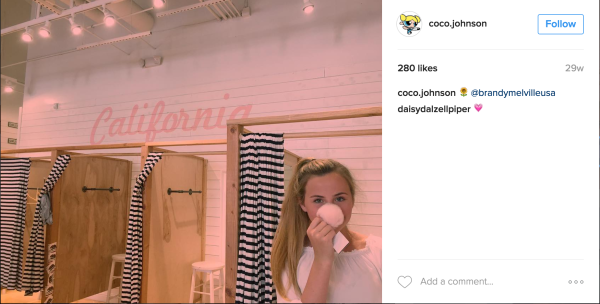
According to Douglas Kahn, a workplace discrimination lawyer based out of San Rafael, it is legal in most cases to hire people based off of looks.
“In the employment context, discrimination is a loaded word. Most people hear the word discrimination and they think any time an employer discriminates that’s against the law―that’s not the case,” Kahn said. “They discriminate all the time to make decisions.”
Despite the legality of this hiring practice, many employees and customers feel that it is morally wrong.
“There are a lot of unfair things that go on in the workplace that aren’t against the law,” Kahn said. “There are a number of published court decisions where judges say, ‘We are not the morality police, we don’t ensure things are morally just in the workplace.’”
Hiring Process
The hiring process at Brandy Melville differed from person to person, according to many of our sources.
Coco Sachs, a current employee at the San Francisco Chestnut Street location and a senior at Lick-Wilmerding High School, had what she considered an experience getting hired.
“My [hiring] experience was kind of abnormal; I wasn’t really looking to work at Brandy,” Sachs said.
Sachs was shopping alone at Brandy Melville, a store she frequented, when an employee (whom she now knows as the manager) offered her a job.
“[The manager] was ringing me up at the register, and she was like, ‘Oh are you interested in working here? I see you shopping here a lot,’ and I’m like, ‘Oh no, but I have always wondered what the hiring process was like if you wouldn’t mind telling me,’” Sachs said.
Sachs was told that if she was interested she would be hired on the spot, and she ultimately gave the manager her number, Instagram handle and a picture of herself. She received a job offer the next morning.
“I haven’t seen my exact scenario happen before,” Sachs said. “Applying for a job is usually a more formal process.”
Unlike Sachs, Chloe Saraceni, a junior at Lick-Wilmerding High School, applied for the job online. She was a frequent shopper as well and wanted a summer job, but didn’t hear back from the Brandy San Francisco location until three months later at the end of summer.
“They didn’t contact me for a while, so I assumed I didn’t get the job or that they didn’t need new hires,” Saraceni said.
In August, the manager called Saraceni into the store telling her that they were looking for new hires and asking her to come in for an interview. She was questioned about her availability and whether she had prior job experience.
The one question that was pretty different, according to Saraceni, was “who is your celebrity or style inspiration?”
Like Sachs, Ruby Seid, a Drake graduate and former Brandy Melville employee at the Corte Madera location, was also scouted.
Seid decided to apply for a job at Brandy Melville with her friend. A month earlier she had been scouted on the floor by an employee who told her she should apply because she would “fit in.” Within a week, Seid received a call and was asked to come in for an interview with the manager.
Throughout the interview, Seid said that the manager asked what she liked to do in her free time, but never asked about her previous work experience.
“She took a picture of my outfit, which I thought was weird, and then she took a close-up picture of my face,” Seid said.
These interview practices seemed strange to Seid, as she didn’t understand exactly what purpose the pictures served.
When Seid asked the manager why the picture was needed, she said that the manager responded that they needed to send it to corporate headquarters to show what Seid looked like, how she dressed and if she was within the parameters of what they were looking for.
About a week later, Seid received an email saying that she was hired.
However, not every hiring experience has been the same.
Both Seid and her friend applied for the job at the same time with the same availability and work experience. According to Seid, the only difference between the two was that Seid’s friend had minor acne. Her friend received an email the same time Seid got the job saying they were no longer hiring.
“I thought [she didn’t get the job] because they had just hired me and they didn’t need someone else now,” Seid said. “When I went in to fill out some forms after I was hired, they told me that once I was out on the floor I should start looking for people who would fit the ‘Brandy Melville look’ because they needed more employees.”
This requirement of “scouting” the floor continued throughout the four months Seid worked in the store, and she continued to notice that the employees only had one look in mind.
“I think, to be honest, the real reason why they hired me is because I was a skinny, blonde, white girl,” Seid said.
Seid believes the store’s hiring process is only based on looks rather than previous experience or other qualifications.
Tam senior Ella Marlatt, a former Redwood student, believes the hiring practices of Brandy Melville are unlike most. Originally, Marlatt applied for a job two years ago, but was not hired. She then applied a second time and decided to do her makeup the best that she could and wear Brandy Melville clothes for her interview. She also tried to mimic the attitude that she witnessed in other Brandy employees.
“I was just trying to go for the typical Brandy look,” Marlatt said.
Marlatt soon received a call that she was hired.
Once she began working there, Marlatt started to notice the unusual ways the employees treated girls who asked for a job.
“When I was working there, a girl came in and she was really pretty but she didn’t look exactly like everyone else who worked there—maybe she had acne or braces or glasses—but, [the employee], who wasn’t a manager, just took the application and threw it away,” Marlatt said. “I asked, ‘What are you doing?’ and she said, ‘Oh, she’s not going to get the job– she’s not pretty enough.’”
Senior Olivia Fioretti, who previously attended Redwood and currently attends San Andreas, was hired at Brandy as a floor model.
Fioretti was first scouted when she was shopping in Brandy Melville and an employee asked her if she would consider working there.
Fioretti later emailed the employee, and the manager asked her to come in for a meeting.
“When we were talking she asked me if I had ever heard of an ‘in-store model,’” Fioretti said. “She asked if I could wear the clothes around the store when I was working and she would pay me 15 dollars an hour.”
Similar to Seid, the manager never asked about Fioretti’s previous work experience. Because Fioretti was already signed to a modeling agency, she believes Brandy Melville saw it as a good fit for her to be a floor model.
This specific job required her to stand near the front of the store, wear Brandy Melville clothes and fold clothes in the store.
Fioretti also noticed when she started working there that the managers were looking for many new employees, but were very particular about who they would hire.
“They are picking girls on their image,” Fioretti said. “It wasn’t based on their work experience or anything. It just felt weird.”
Marin Academy senior Lauren Fish first worked as an employee at Brandy Melville in 2015, the summer prior to her junior year.
Fish was looking for a summer job that would hire high schoolers, when she decided to apply for a job at Brandy Melville because her friend had recently started working.
The managers wrote down Fish’s contact information and took pictures of her. They then emailed her and asked for her to come in for an interview. Fish later received an email after the interview saying that she got the job and could start working whenever she wanted.
“I think I got the job because I applied very early on in the summer, and I had work experience before so I knew how to handle the customers,” Fish said.
Fish asked the managers if she could work again this past summer going into her senior year and was hired without having to reapply.
“It was a pretty easy process to get a job both summers,” Fish said.
Atmosphere:
When customers leaving Brandy Melville at multiple Bay Area locations were asked what they thought of the store and employees, they had a variety of responses.
Caitlyn, a young college graduate, said, “The vibes are hard to explain. It’s pretty intimidating at first, because you think ‘everyone here is really cool,’ but then usually people are very friendly.”
Carrie, a Tam student, said, “I would rather go buy stuff online than have to deal with the girls inside the store.”
Machiko, a mother, said,, said, “I think [Brandy Melville] makes girls feel like they need to lose weight. If the girls were friendlier it would make the girls who shop feel better.”
Brenna, a Tam student, said: “I just feel kind of judged when I walk in. They look you up and down.”
Makenna, a Tam student, said: “Employees there are so rude. I know some of the girls there and they are sweet, but for the most part, they don’t welcome you, they don’t say ‘hi.’”
A mother and her 11-year-old daughter: “I like shopping there. The girls are friendly.”
While customers shared positive sentiments about the store, Marlatt felt that it was a judgmental work environment, which contributed to her decision to quit. Fioretti agreed.
Unlike many Corte Madera employees, Fish found the environment in the store to be very positive and enjoyed working with other girls her age. Every employee she worked with was either in college or attending a high school in Marin.
Fish felt that all of the employees got along well and thought it was fun to meet new girls.
“I think the atmosphere was very positive. There wasn’t any aggression towards anyone and no one ever felt excluded,” Fish said.
Since working at Brandy, Fish has continued to keep in touch with many of her co- workers.
Sachs and Saraceni, who work at the San Francisco location, also said their co-workers play a huge factor in their happiness at Brandy.
“I am really happy to be there mostly because of the people,” Sachs said. “ I’ve met my best friends there.”
Saraceni said she enjoys working with both people her age and college-aged because there is always conversation to be made. She also recalls that the company is flexible with scheduling due to the fact that most people working at Brandy Melville are in school.
“I definitely like working there. It’s a pretty casual job. This whole fall I’ve only worked weekends,” Saraceni said.
Though Saraceni enjoys almost all aspects of her job at Brandy Melville San Francisco, she is unsure of the demographic the brand is targeting.
“On their Instagram page you see a lot of photos of college-aged girls and models, but for the most part in the store, a lot of middle school girls shop here, which fits along with a lot of the t-shirt styles,” Saraceni said. “But then you have other styles that are more on trend and more interesting for older girls.”
PAY:
Many sources thought pay was distributed in an irregular way. While some girls were getting paid minimum wage, others in the same position were getting paid much more.
Although Marlatt was encouraged to keep her salary private, she still shared with her co-workers that she was getting paid $10.50 per hour in her position as a sales associate. However, many of the other employees told her they were getting paid $13 or $14 per hour for the same title, even though they had only started working a little before her.
“After a while I became fed up with the way that they treated me,” Marlatt said. “I would work my ass off.”
On the other hand, when Fioretti was hired, she was told she would be paid $15 per hour. Fioretti knew this was high compared to many employees who were only getting paid around $$10 per hour, but was told it was because she was a floor model.
After talking with some of her co-workers, Fish also realized some employees were getting paid higher than others in the same position. During her first summer on the job, Fish was paid Marin’s minimum wage at $9.50 per hour, which increased the next summer to $10.50 per hour. Some of the other girls said they were getting paid $11 per hour or more.
Seid knew that she was getting the same pay as some of the other employees, but didn’t realize there was such a big gap with other girls until they talked about it one day. Some of her co-workers said they were getting paid $14 per hour even though they were hired around the same time.
“There was another girl who was hired after me that was even getting paid $13 per hour,” Seid said. “Everyone was really confused.”
When Seid’s co-worker asked why some girls were getting paid so much higher, Seid reported that their manager said it was based on the time of year they were hired. The co-worker then made the point that they were all hired around the same time, but the manager responded that floor models get paid at a higher rate. However, the co-worker wasn’t aware she was a floor model, according to Seid.
That co-worker believed pay is determined based on hiring date and the time of the month. On the other hand, Fish was told something different by one of her bosses.
“One of the bosses said the upper management people decide [pay] when we send in the pictures,” Fish said. “I think that kind of explains a part of it, but I don’t know if it’s like that now.”
Despite the fact Sachs was never told exactly how much she would get paid when she first started working at the San Francisco location, she realized she was getting a minimum wage salary as she expected. Above Sachs’ position is a key holder, who receives a salary of $15 per hour rather than the minimum wage salary of $13 per hour in San Francisco.
“Most of them in my position were getting paid the same, from what I know. I’m technically a sales associate, and we are making minimum wage unless you have been working there for a really long time and you ask for a raise,” Sachs said. “They’re usually open to that.”
Leadership:
Employees at the San Francisco location shared that they were photographed at work daily, while those at the Corte Madera location were photographed randomly. Saraceni and Sachs were told that the photos were sent to corporate.
“Basically, it’s the key holder’s job to take the photo of you, they usually do them all at once, and pull you aside, outside to go and take it,” Saraceni said. “It’s everytime you work, and they send the photo to corporate.”
Sachs said she has always liked fashion, so she always wanted to wear the best outfit for work and experiment with different trends.
“I remember worrying about who was going to see [the photo], but as far as I know management doesn’t comment on the photos, it’s just to see what the girls are wearing,” Sachs said.
Both San Francisco employees felt an initial subconscious pressure to look good because they knew they would have their picture taken when they went to work.
“I am used to it. It’s not like I really care about it because I never see the photos they take,” Saraceni said. “But I felt, at first when I got the job, a pressure to always wear something different or make sure I had a specifically good outfit or not wear the same thing in the same month.”
Fioretti remembers the key holders also took pictures of her at the Corte Madera location the first day she started working to send to corporate.
“They took me in back and they took pictures of my shoes, my jeans and my face,” Fioretti said. “I thought it was pretty random because they didn’t tell me what it was for.”
Likewise, Fish doesn’t know the exact reason for why the managers send pictures of the girls during work to corporate, but she believes it has to do with representing the company in a good way.
“Although they never told me, I think it was for the upper management and they just wanted to see how we were dressing and see if we were representing the brand in an appropriate way,” Fish said.
Sources also commented on varying treatment of employees from managers. Many of the Corte Madera employees noticed unfair treatment when they were working in the store.
However, Marlatt felt that some unfair treatment may have been due to the fact that they had been working at the store longer than she had, so it didn’t bother her as much.
“Compared to the other girls I was always on my feet doing stuff but they got longer lunch breaks, got paid more, and were having way better treatment,” Marlatt said.
Fioretti also saw a strong correlation between being liked by the managers and getting paid more.
“It was different treatment [by the managers] for each girl,” Fioretti said.
Fioretti also noticed that if the managers liked you, they would let you work in a better area or work a different job than the other employees.
“It’s not professional. It’s not a good business,” Fioretti said.
Sachs, however, feels that working for Brandy has been an influential experience in her life.
“It’s also inspiring to be able to come into a store that’s run entirely by young women. It might seem strange but for me to be looking up to people who are working part time in college but also managing a boutique is so cool,” Sachs said.
The owners, Marsan and Longo, are reported to be very involved in the company.
“I haven’t met them, but they have definitely come into the store,” Saraceni said. “All the keyholders text with them about making decisions for the store and have to send pictures into Longo [owner]. He’ll tell them what to do and when to change things up or if they want to close early on a certain day, they have to ask him.”
According to Saraceni, Longo always tells the keyholders when he’s coming to town, so they know when to expect him.
Longo, Marsan, and Brandy Melville HR have not responded to requests for comment..
Upon speaking with the managers at the Corte Madera location, we were told they were not allowed to be interviewed unless our questions and their answers were reviewed by corporate management.
Additionally, the managers at the Corte Madera location were afraid of the repercussions of employees sharing their experiences of working for Brandy Melville, and told employees they were “not allowed to be interviewed.” Because of this, employees from the Corte Madera location declined to comment.
For the archived version of this story in print click here.

